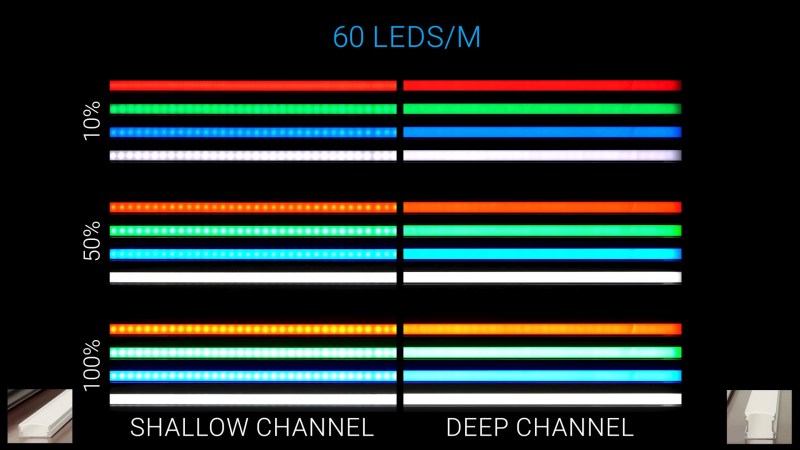We all want a nice and shiny LED strip that doesn’t actually look like it consists of individual LEDs – a bar of uniform light is just that much more attractive. There’s all kinds of diffusion options available out there, but they can be confusing – sometimes you’d just like to know, which one is better? If there’s one thing that could easily settle this, it’s a practical test, and that’s what [The Hook Up] has devised for us to learn from.
First off, he talks about LED strips available – between 30, 60 and 144 LED per meter variations, the latter is going to be easier to diffuse than the former. From there, there’s a few different kinds of diffuser covers and aluminum profiles you can get, and [The Hook Up] pairs them in combinations, filming them from a distance and giving us concise visuals of how each combination works at different duty cycles, as well as making brightness measurements every now and then to evaluate losses of different diffuser layers. He proposes a simple rule – when picking a diffuser, distance between the LEDs and the diffuser has to be larger than the between-LED distance, and experiments confirm that. In the end, one of the takeaways is that the differences between 60LED/m and 144LED/m strips are not significant enough that they can’t be compensated for with a decent diffuser.
It seems as though you don’t always have to go for the most expensive option. Of course, you don’t have to go for the pre-made diffusers either – you can 3D print them, or, indeed, use one of the dozens options available. However, if you ever simply need to diffuse a few meters of LED strip quickly, now you know which combinations will work for you.
We thank [P-Storm] for sharing this with us!

















Diffusers are great for if you want your lights to look pretty in the dark, but really diminish peak brightness making them visible from a much shorter range in daylight.
Harsh shadows look like crap. If you have a hood diffuser and right setup you can have 60-80% transmission. You get 90% just by putting glass or plastic in front of them.
Companies like luminitco make “engineered diffusers” AKA light shaping diffusers or holographic diffuser or microlens diffuser…
They allow for neat tricks like eliminating the dots while not sacrificing intensity.
These are definitely better than cheap just rough diffusers but I was never able to get these to actually measure at the 90% efficiency. Sometimes the problem was getting enough highly reflect surface in the mixing chamber. Light will scatter back into the led board and extrusion and then get absorbed.
where does one purchase anything from luminitco? looks a lot like carclo, where it’s a product page, but no direct order page
Looks like you can buy from materials-direct if you’re in the uk but point is well taken. The hook up (very helpfully) is testing stuff you find on Amazon or eBay, not stuff that has min orders of $1k+
Using a COB LED strip will minimize the issue.
For 10x the price, and h way more electricity.